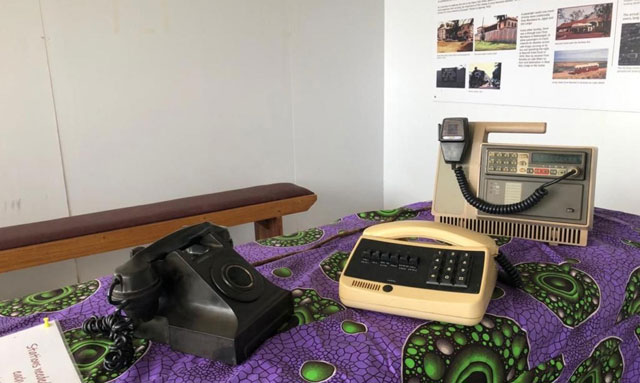
Kampala, Uganda | THE INDEPENDENT | Kalerwe, a Kampala slum famous for the fruits, vegetables and meat market got its name from the Uganda Railway in the early 1920s.
After construction of Luzira-Kampala six-kilometer railway line in 1914, which took two years because “one of the British builders (was) corruptly selling off timber meant for construction,” there was an attempt to extend the railway to Bombo with a “small railway” that first stopped in Kawempe.
This is how Kalerwe got its name. The Kampala-Kawempe railway started operating in 1923 and was later extended to Bombo. But it did not stimulate cotton production as colonialists had anticipated. The Kampala-Bombo railway line was thus shutdown in 1926.
This history—artefacts, photos and video—were on display during the 10-day’s exhibition by the Cross-Cultural Foundation of Uganda (CCFU) at the Uganda Museum, which ended on December 18th, 2020.
Uganda Railway is a treasure-trove of Uganda’s history. Aliguma Ahabyona from Cross-Cultural Foundation of Uganda says the exhibition is part of the activities that will climax with the establishment of Uganda Railway museum.
The establishment of the museum is being financed by the European Union (EU) that is also partly financing the revamping of the Tororo-Gulu railway line.
According to a news brief published on the European Union Uganda website, the EU ambassador to Uganda Attilio Pacifici “highlighted the importance of recalling the past to understand how the Ugandan society has been shaped by the changes that have occurred in the last centuries, although painful at times” during the opening of the exhibition.
“He highlighted the importance of the museums for keeping the history alive for learning purposes.”
Artefacts at the exhibition included kerosene lamps, which were used to alert trains and passengers about the danger or normalcy at a train station.
Telephone sets used for communication in the 1970s were also on exhibition. For instance, telephone wires first ran along railway lines for some time before they were extended to other areas.
Distinct photos on display included Ripon Falls Hall, Jinja which accommodated the Queen when she visited Uganda to commission the Nile Bridge in 1954. And a photo of Omukama of Toro when he christened “Batoro” the locomotive train that made the inaugural to Kasese Katoro in 1956.
On display also were photos highlighting how racism was reinforced during operations of the railway. First-class sections were for Europeans only. Aliguma explains that there were booking sections and toilets for only Europeans who never wanted to mix with blacks.
********
URN
 The Independent Uganda: You get the Truth we Pay the Price
The Independent Uganda: You get the Truth we Pay the Price




The Railway Museum is now officially open in Jinja…great article